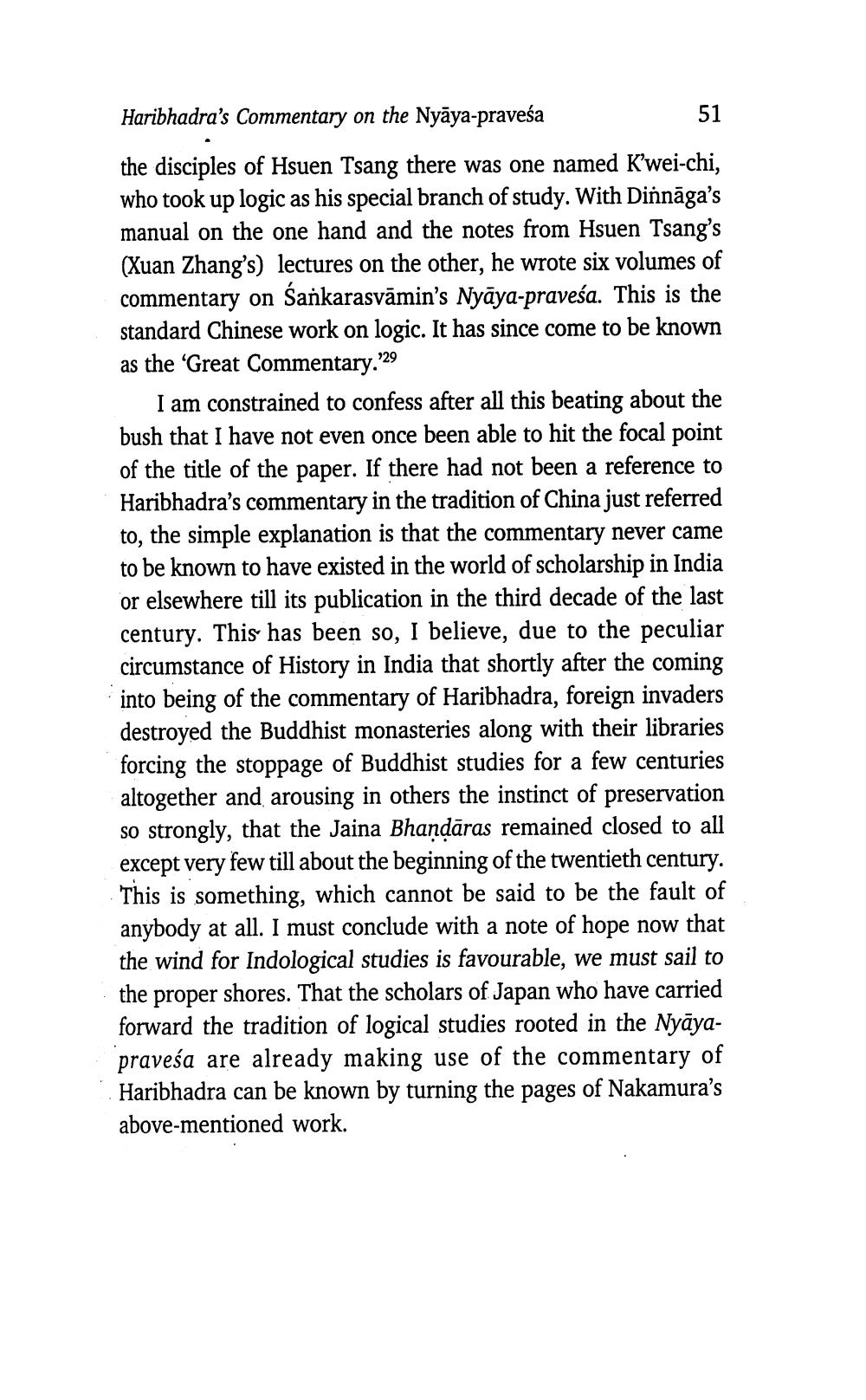________________
Haribhadra's Commentary on the Nyāya-praveśa
51
the disciples of Hsuen Tsang there was one named K'wei-chi, who took up logic as his special branch of study. With Dinnāga's manual on the one hand and the notes from Hsuen Tsang's (Xuan Zhang's) lectures on the other, he wrote six volumes of commentary on Sankarasvāmin's Nyāya-praveśa. This is the standard Chinese work on logic. It has since come to be known as the Great Commentary. "29
I am constrained to confess after all this beating about the bush that I have not even once been able to hit the focal point of the title of the paper. If there had not been a reference to Haribhadra's commentary in the tradition of China just referred to, the simple explanation is that the commentary never came to be known to have existed in the world of scholarship in India or elsewhere till its publication in the third decade of the last century. This has been so, I believe, due to the peculiar circumstance of History in India that shortly after the coming into being of the commentary of Haribhadra, foreign invaders destroyed the Buddhist monasteries along with their libraries forcing the stoppage of Buddhist studies for a few centuries altogether and arousing in others the instinct of preservation so strongly, that the Jaina Bhandāras remained closed to all except very few till about the beginning of the twentieth century. This is something, which cannot be said to be the fault of anybody at all. I must conclude with a note of hope now that the wind for Indological studies is favourable, we must sail to the proper shores. That the scholars of Japan who have carried forward the tradition of logical studies rooted in the Nyāyapraveśa are already making use of the commentary of Haribhadra can be known by turning the pages of Nakamura's above-mentioned work.




